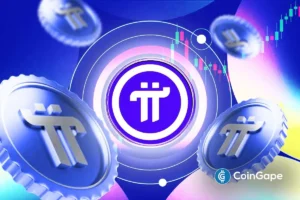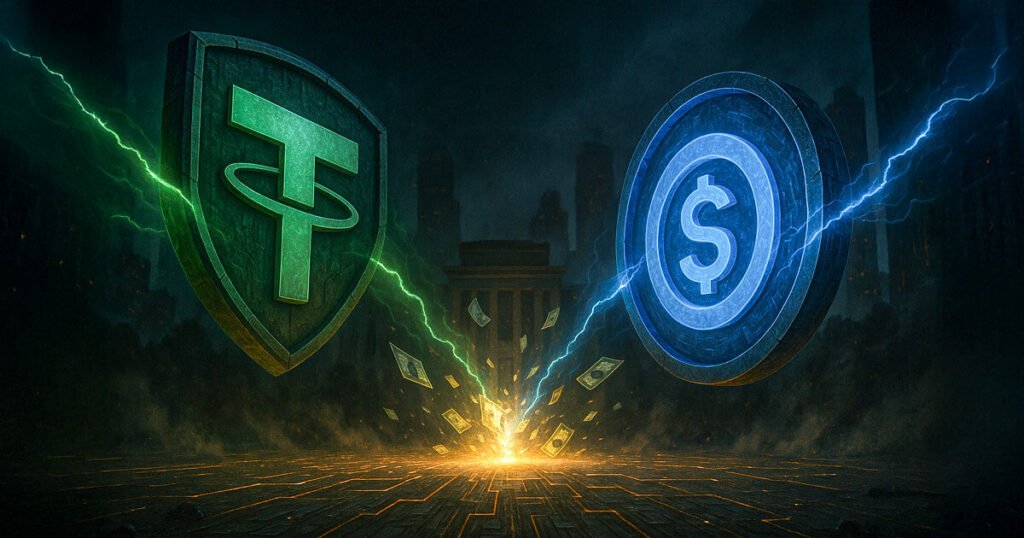Tether’s Dominance and the Emergence of USA₮: A Key Player in the Stablecoin Market
Stablecoins are rapidly transforming the financial landscape, and Tether’s USDT has emerged as a leading force with an impressive market capitalization of $171 billion. This dominance not only eclipses its competitors but sets a new standard for stability and liquidity in the crypto realm. Recently, Tether has introduced USA₮, its new U.S. dollar stablecoin, aiming to gain ground against Circle’s USDC within the domestic market. This article delves into the competitive dynamics of stablecoins, influenced by emerging legislation, market trends, and technological advancements.
The Regulatory Framework: GENIUS Act
The launch of USA₮ is strategically aligned with the recent enactment of the GENIUS Act, which establishes a federal framework for fiat-referenced tokens. Signed into law on July 18, the act mandates monthly reserve attestations, ensuring high-quality liquid asset backing, as well as clear supervisory lanes for both bank and qualified non-bank issuers. Tether’s decision to appoint Bo Hines to head its U.S. unit signifies a commitment to navigating this regulatory landscape while building essential partnerships with Anchorage Digital and Cantor Fitzgerald for issuance and custody.
Competition Heating Up
Circle’s recent IPO, which raised approximately $1.05 billion, has intensified competition in the stablecoin market. Both USDT and USDC are now in a race to ensure they meet the expectations of U.S. merchants and payment processors who demand tokens that integrate seamlessly into existing money-movement policies. This means providing robust reserve certifications, bankruptcy-remote structures, and straightforward redemption mechanics to enhance trust and utility.
The recent ban on issuer-paid yields under the GENIUS Act significantly shifts the commercial model for stablecoins, prioritizing operational efficiency over yield generation. Circle’s reserves are largely managed through BlackRock’s Circle Reserve Fund, while Tether continues to bolster its U.S. Treasury investments, further emphasizing a commitment to stability and reliability in its offerings.
Multi-Trillion Dollar Revenue Dynamics
The volume of stablecoin transactions has surged to multi-trillion levels this year, underscoring the increasing importance of liquidity and network coverage. This growth reflects a broader trend where payment processors are integrating stablecoins into their workflows to improve transaction efficiencies. Visa’s recent expansion into stablecoin settlement across additional networks and PayPal’s extension of its PYUSD token signify a shift towards facilitating frictionless payments, enabling merchants to navigate through congested blockchain spaces.
The Path Forward for Onshore Stablecoins
Looking forward, the onshore distribution of stablecoins is expected to grow significantly, with projections estimating a float of $400 billion by late 2026, likely increasing to $650 billion by late 2027. This growth will primarily depend on the capabilities of USDC, which holds a substantial market share due to its established bank connections and fintech integrations, as well as the emerging USA₮, which is predicted to capture 20-25% of the market as adoption accelerates.
Various scenarios exist for Tether and Circle, with aggressive paths potentially elevating USA₮’s market share if partnerships linked to Anchorage and Cantor Fitzgerald enhance its adoption across U.S. venues. In a more conservative scenario, faster bank adoption of USDC could solidify its commanding position, capturing 70-75% of the market share by 2027.
The Impact of Reserve Management
Reserve management is becoming increasingly important as stablecoins gain traction. With predictions indicating that onshore stablecoins could reach a float of over one trillion dollars by 2027, the acceptable shift towards U.S. Treasury bills is likely to exert influence over market dynamics. Significant investments by stablecoin issuers into T-bills will affect yield rates, serve liquidity demands, and could challenge traditional bank funding models if stablecoins begin to absorb large amounts of deposits.
The strategic positioning of Tether and Circle in relation to their reserves could dictate their market viability. As both firms navigate U.S. laws, ensuring transparency and compliance will be critical to maintain competitive advantages.
The Role of Integration and Market Dynamics
Ultimately, market dynamics will be dictated by integration and relationships. How corporate treasurers interact with American banks will inform which stablecoin becomes foundational to their operations. Factors such as processing integrations and brokerage tools will also determine which stablecoin captures retail market share during transactions.
With both USDC and USA₮ vying for dominance in a possibly ballooning market worth trillions of dollars in the coming decade, the coming years will be pivotal, locking in the first tier of market share for both issuers. The competitive edge will rely heavily on their ability to meet the requirements of the GENIUS Act, establish solid partnerships for asset management, and foster seamless integration to make their stablecoins indispensable within the financial ecosystem.
In summary, Tether’s introduction of USA₮ marks a significant development in the stablecoin market, driven by regulatory changes and competitive pressures. Both Tether and Circle are well-positioned to capitalize on growing demand as they navigate the evolving landscape. As we move forward, integration, reserve management, and compliance will shape the future of stablecoins, defining their roles in a broader financial context.

















